Viral growth: +3 Years of growing a SaaS with network effects
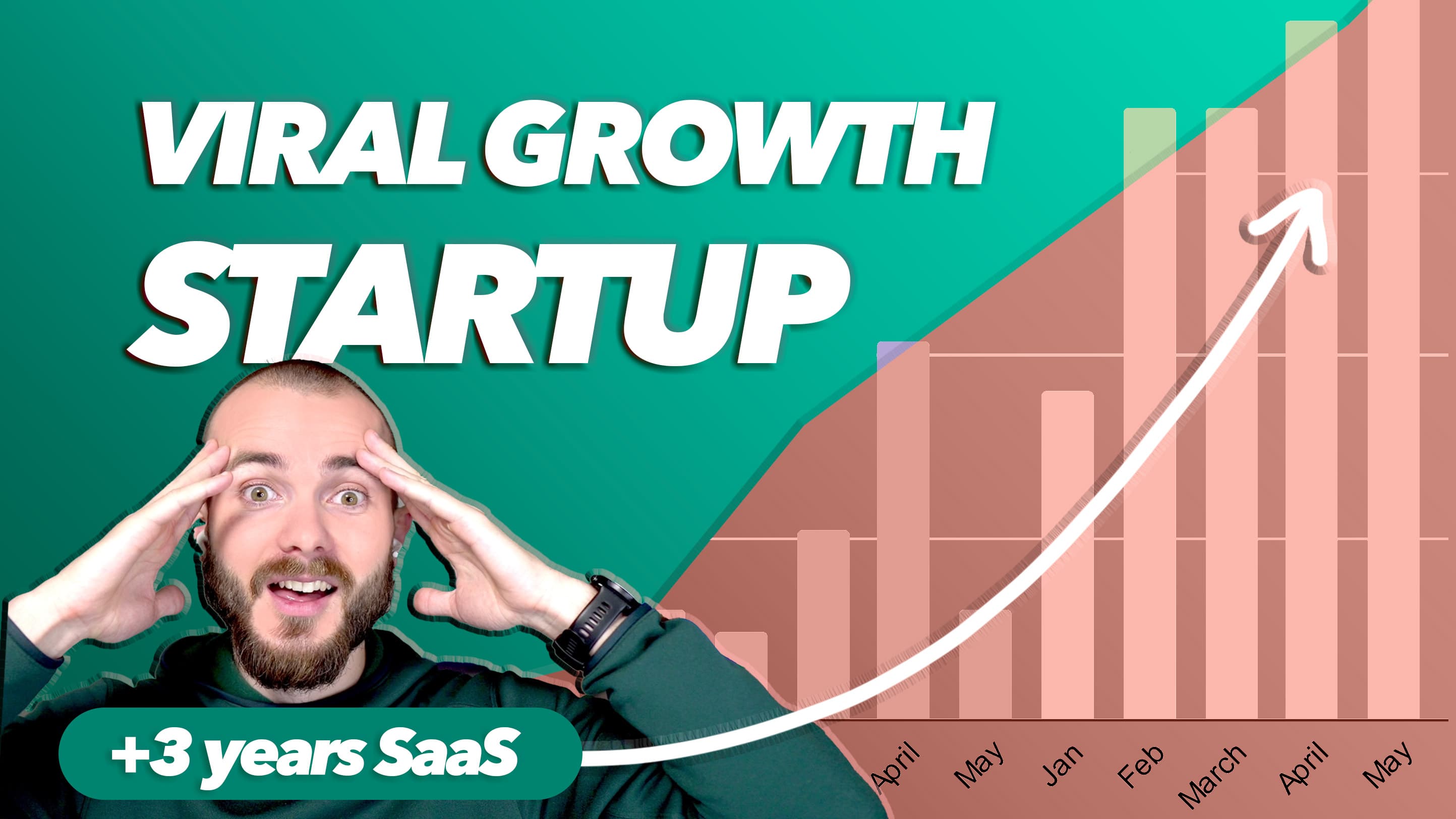
Contents
Building a startup takes time, and is often not linear. Here is our # events growth the last few years at Univid..
2022 → 2023: x2.4
2023 → 2024: x3.4
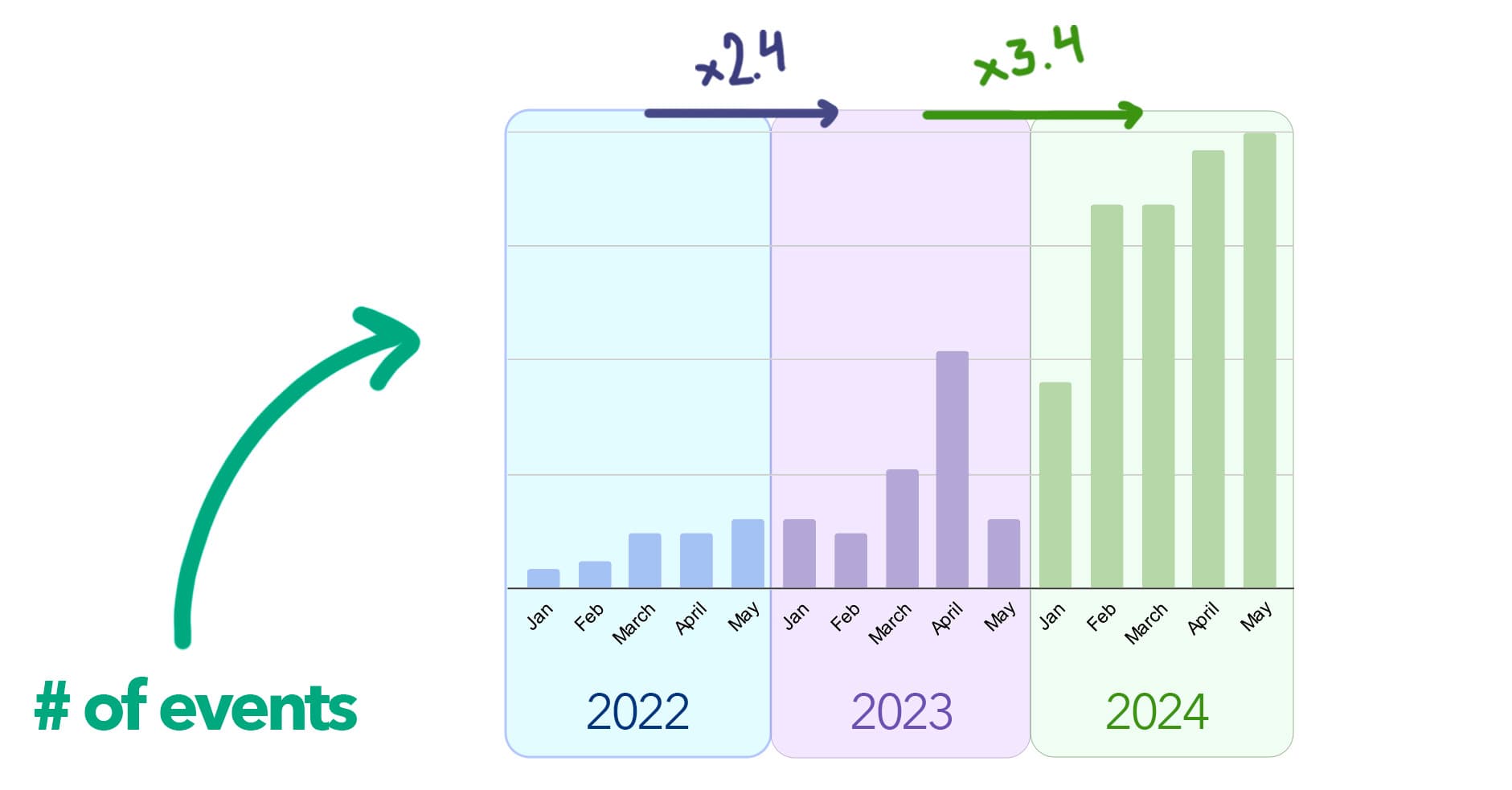
Viral growth over 3 years of growing the B2B SaaS Univid
As measured over the high seasons jan-may.
The famous startup "hockey stick growth" in real life
And below is the updated number of events per quarter graph for Univid - starting to form the famous startup "hockey stick" graph.
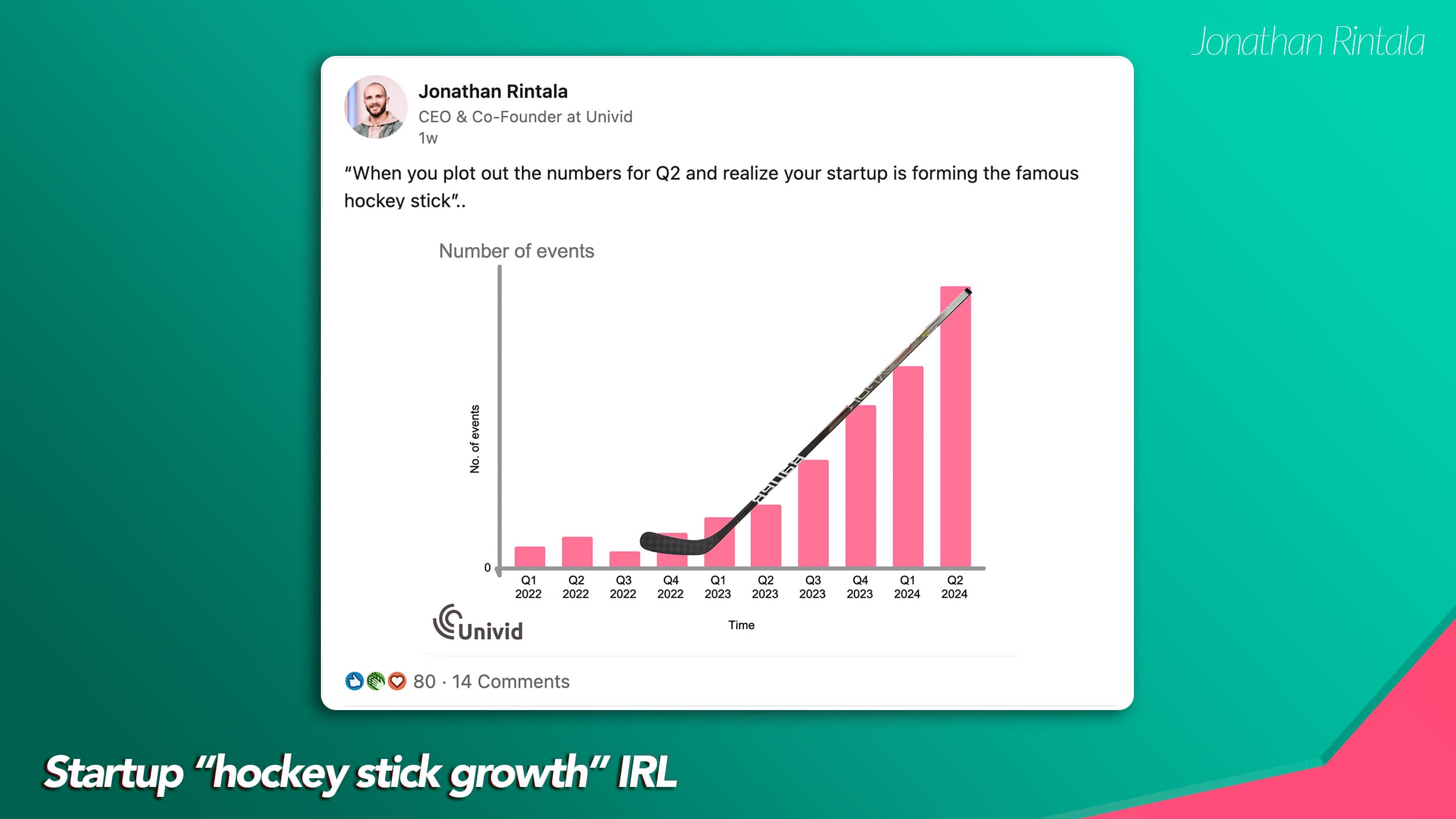
The startup hockey stick graph - # events per quarter on Univid growing exponentially
Setting the North star metric
All startups need a North star metric. For SaaS companies it's often ARR. But, often it should be something else.
What's actually driving momentum and growth in your business?
It's often something different from revenue.
The North star should ideally be a leading indicator, whereas revenue is a lagging one.
Number of events has been our North star in Univid since day 1. As it gives an idea of how much momentum is in the platform + feeds network effects.
More events → more value for customers → more attendees experience the platform → more users.
At least in theory - if you have some K-factor (viral factor)..
What is a network effect?
A network effect is what happen when a product gets MORE valuable as more people are using it.
Example of products with network effects:
The telephone: Imagine the increase of the first telephone's value, when the second person with a telephone joined the network.
Uber: By each new driver joining Uber's platform, the rider will have a better service with more available rides. And the more riders, the more lucrative to join as a driver in the network.
Reddit: By each new Redditor joining - the community will be expanded with more knowledge, threads, and valuable comments that will both improve the experience for existing Redditors, but also attract more new users.
Why networks effects are awesome for SaaS
Getting more customers and growing is one of the most difficult challenges for SaaS companies in 2024 - as competition is fierce and markets are saturated.
Acquiring new customers through network effects is a super power for any SaaS - as it's a cheap way of growing i.e. has a low CAC (cost of acquisition) and can be done a in large scale.
And even better, where growth (in theory) with each new user becomes cheaper.
Network effects also builds a strong moat around your startup - making it more difficult to copy. Something Rob Walling talks about in the SaaS Playbook and how integrations can drive the network effect moat for SaaS companies.
The challenge with network effects
Network effects often require a long time to pick up - and require a positive K-factor to play out. Thus, companies that rely on network effects like social media platforms often take on VC to cold start. Cold starting means the network has to grow beyond the initial critical mass to build the "atomic network". As a network without any users typically does not provide any value.
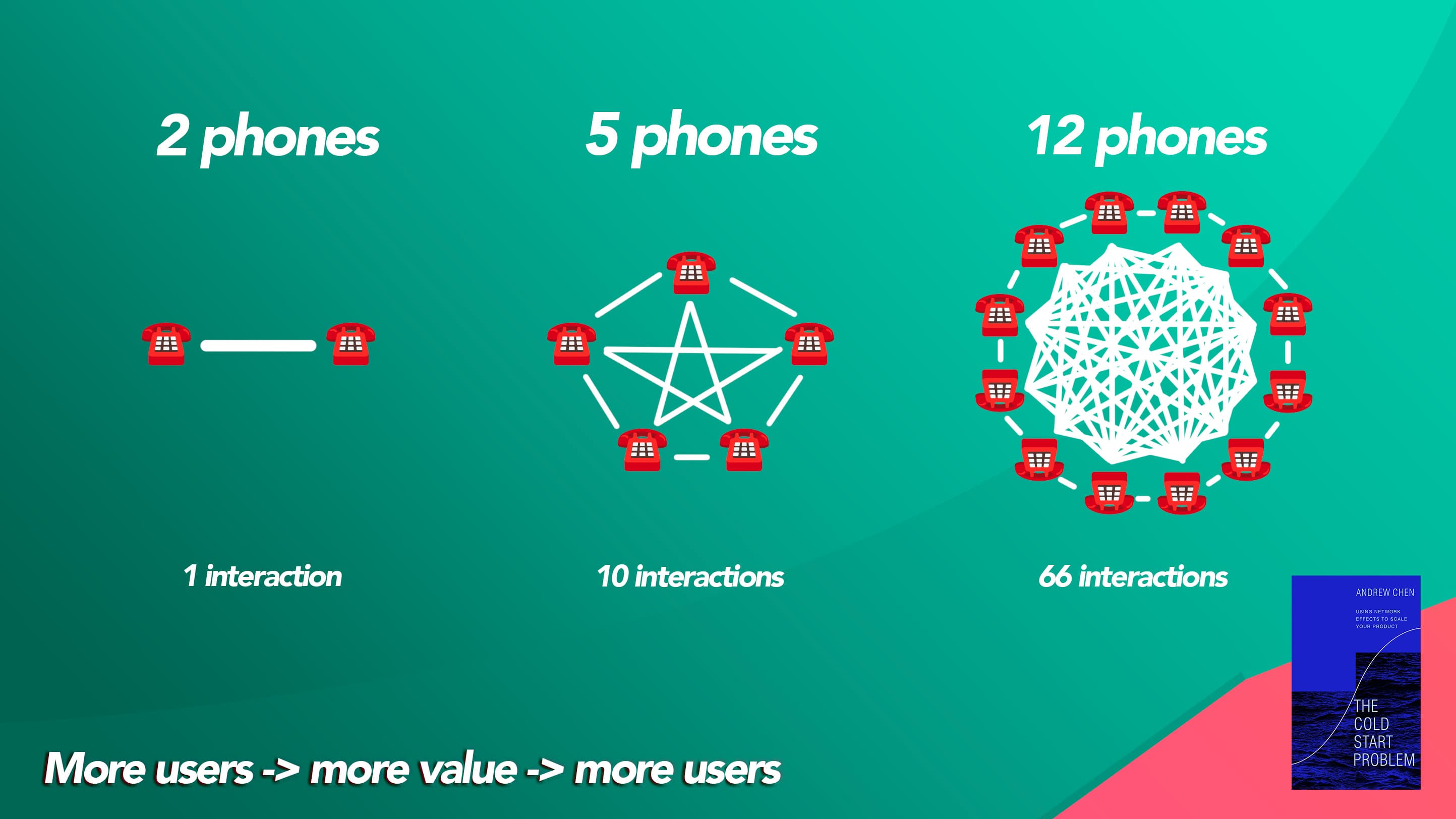
An atomic network is the smallest number of users needed to stay engaged & self-sustained. Once you reach this magic number, the users and their activities should self-sustain themselves. In other words, they are getting value from the network and giving back to it.
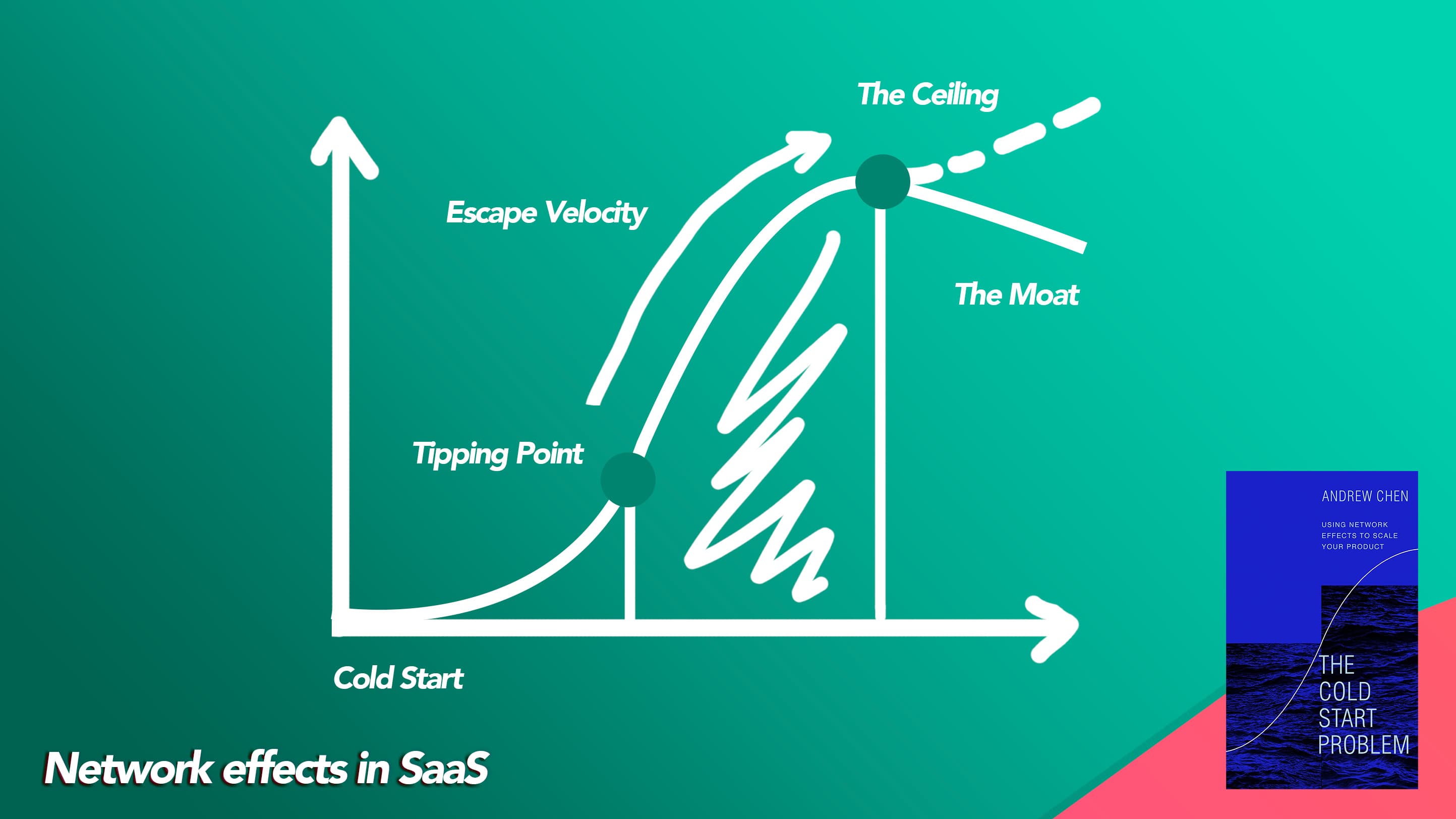
Once you reach, what Andrew Chen in The Cold Start Problem refers to as "the tipping point". Then, the atomic network has sufficient momentum to build and scale new networks at an exponential rate. Think of inflection point where a sliding mass of snow turns into an uncontrolled avalanche.

The K-factor
The K-factor or the "viral coefficient" is a quantitative measure that tells just how viral your SaaS is.
(#) Invitations Sent per User x (%) Conversion Rate = (#) Viral Coefficient
To calculate your K-factor - simply multiply the number of invitations sent by existing users of your SaaS with the conversion rate of those newly referred users.
The higher the viral coefficient the better.
Example of K-factor: Each existing user of your SaaS recommends the platform to 15 people. 40% of these people convert and become users. That gives you a viral coefficient of 6. Ie. each user would be generating 6 new users.
How to get network effects
Growth through network effects comes either via:
✅ Word of Mouth (people recommending organically)
✅ Incentivized Word of Mouth (people getting something in return to recommend)
✅ Demonstration Virality (people seeing it in action)
Word of Mouth (WoM)
People recommending your startup organically, without incentives. Either to fellow colleagues, industry peers, partners, friends, or family. Recommendations are often done digitally in LinkedIn DMs or Slack channels, but can also be through industry events, at lunch, or during after works.
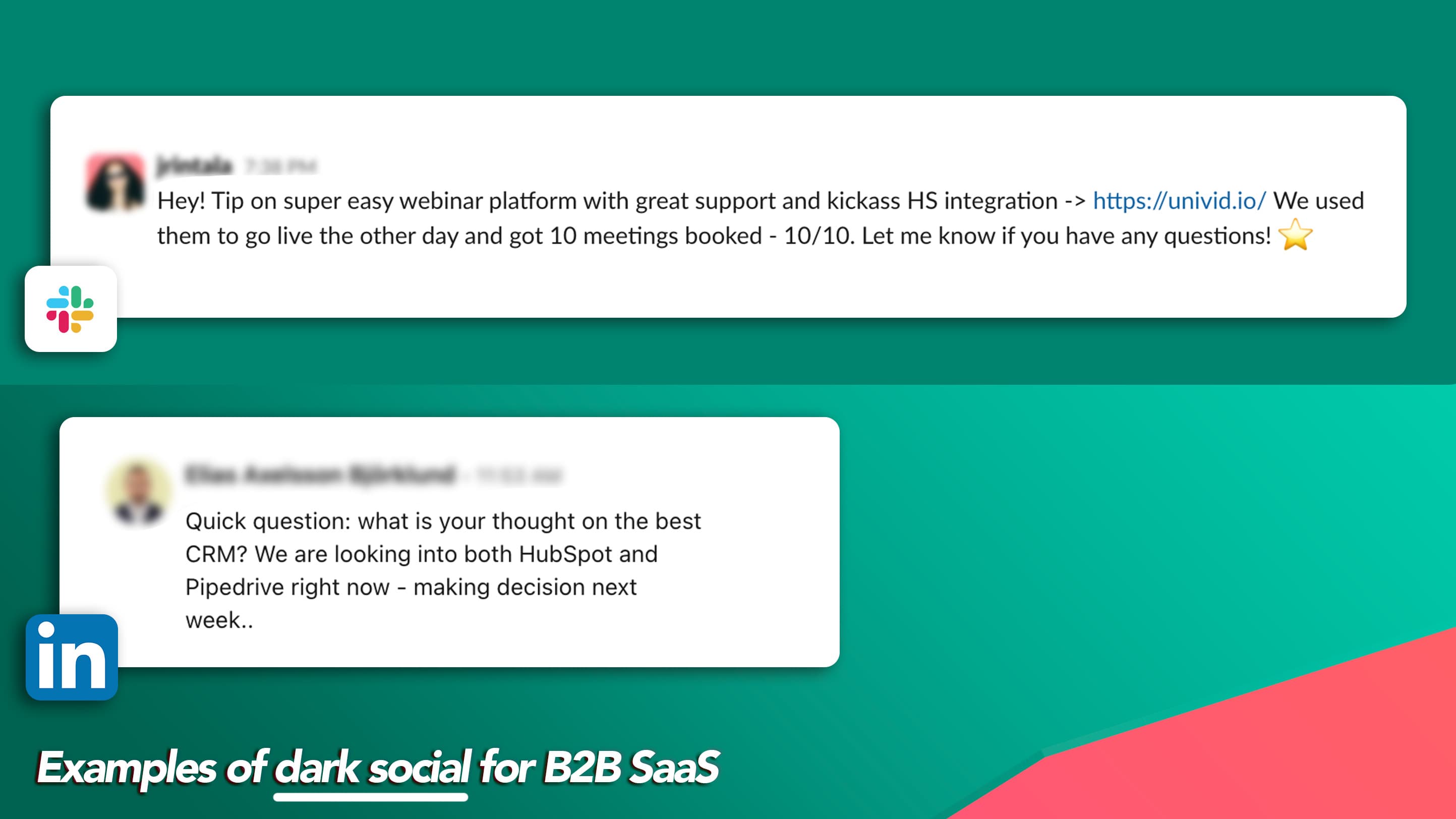
Examples of dark social on LinkedIn DMs and in Slack channels for B2B SaaS
In reality, growth and referrals happen a lot in places you cannot see (or properly measure) - ie. what's commonly referred to as dark social.
An example of how to incentivize dark social in B2B SaaS
Word of mouth can be either public WoM via organic posts in social media, podcasts, or on review sites, but more often these recommendations are through private WoM, often referred to as "dark social" ie. through private DMs on LinkedIn, emails, subreddits, private Facebook groups, etc.
A huge growth lever for our SaaS that brought a ton of qualified leads and signed deals - in "dark social channels" that we could not reach ourselves - was when our CS nudged one of our customers within a big organization to see if they could refer us to any other of their sister companies.
They told us that they had this internal Slack channel where all of their marketers hanged out - and they were happy to shoot a recommendation message there (as they loved the product) and even asked us for input on the copy to make the messaging crispy!!
The power of gaining ambassadors and working closely with customer success (and a quality product) to overdeliver and nudge by asking!

Incentivized Word of Mouth
People getting something in return to recommend your SaaS. This does not have to be a monetary exchange. Rather, I would argue the best form of incentive is a social one.
A social incentive could be to "help your startup on your mission to change the space you are in" - making it real for your customers what practical benefit this could give your startup.
Make it personal and set a tangible goal. Are you aiming to get 5 more reviews before the week ends, and you are 2 reviews down? Tell them!
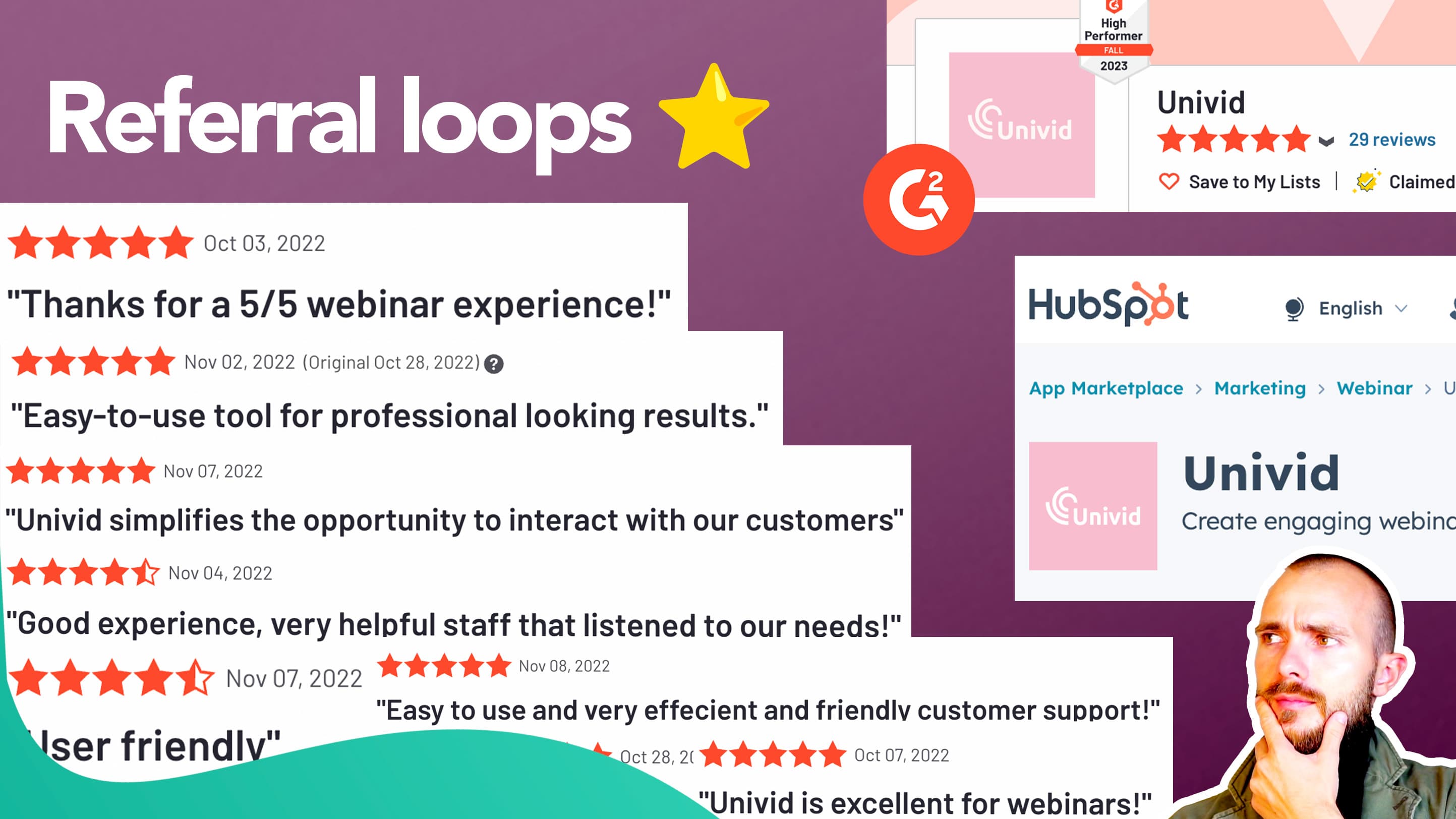
Demonstration Virality
People seeing your SaaS in action - either making them want to use it themselves or recommend it to peers.
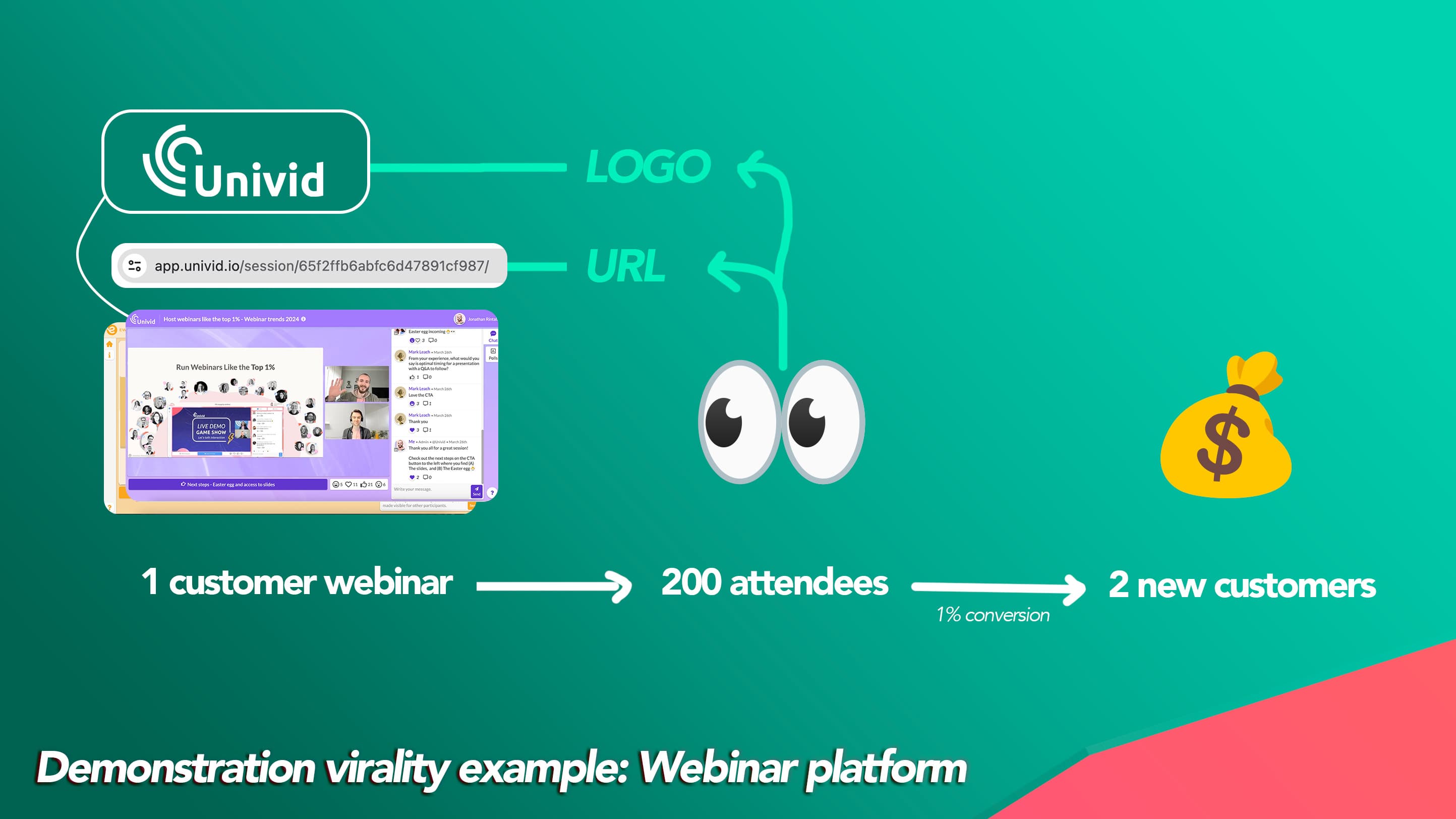
At Univid, we have seen solid compound growth from all these channels together - and network effects are an absolute thrill when they start to come into play.
Conclusion
Growing a SaaS with network effects takes time - a long time. But now you have the basics tools to do it. You should probably have some additional growth channels in mind, that can feed into the network and cold start it. That could literally be anything - cold calling, email marketing, a newsletter, a podcast, or a Youtube channel.
Also, network effects does not have to be the main growth channel of your SaaS - it could be a complementary channel that you grow over time - and suddenly you are past the tipping point and growth will happen by itself.
But, without being aware of network effects, how you can build them, or what the challenges are - you will not enjoy any benefits of them. Or at least none of which you can control.
Let's go out and build!
Want to learn more about growing SaaS companies?

